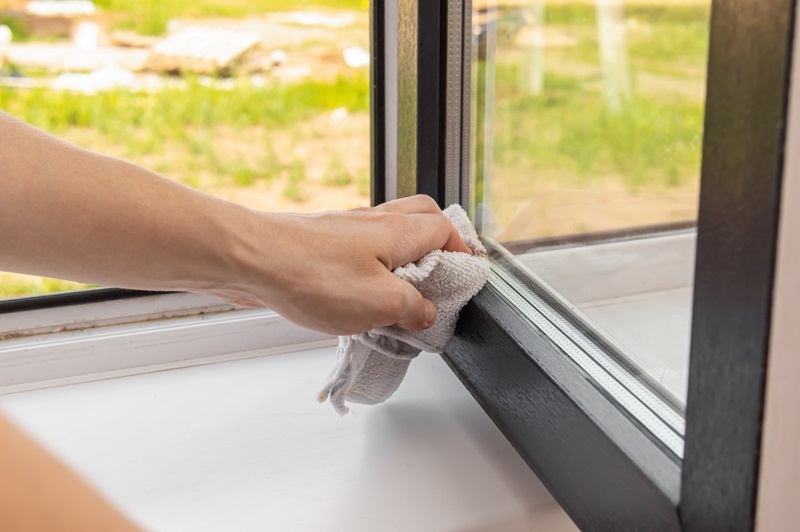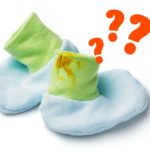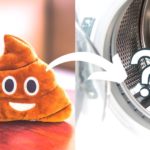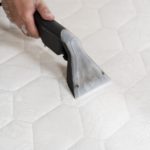In this guide, we’ll teach you how to clean fly poop off various surfaces in your home.
Whether you need to remove fly poop from your walls, ceilings, windows, carpets, bathrooms, or wooden surfaces, here we have the secrets to a fly poop-free home.
Keep reading to find the solution you’re looking for.
How Do You Clean Fly Poop Stains?
Cleaning fly poop stains can be done with a few simple supplies. Depending on the type of surfaces that are affected, you will need:
- Mild detergent or washing-up liquid
- Paper towels or microfibre cloths
- Disposable gloves
- Wood cleaner
- Spoon or butter knife
- Mild multi-surface cleaner
- Bicarbonate of soda
- White vinegar
- Soft-bristled brush
- Scrubbing brush or a toothbrush
- Glass cleaner
- Isopropyl alcohol
Once you’ve gathered your supplies, put on the disposable gloves and start cleaning immediately.
The sooner you address the fly poop, the easier it will be to clean. Fly droppings can become more challenging to remove if they are allowed to dry and adhere to the surfaces beneath.
You can find exact instructions for cleaning fly poop from various surfaces in your home under the following subheadings.
How to remove fly poop from paint
Removing fly poop from painted surfaces requires a delicate touch to avoid damaging the paint. Here’s a step-by-step guide to help you clean fly poop from painted surfaces effectively:
- In a bucket, mix a small amount of mild washing-up liquid with warm water. This solution is gentle enough not to damage the paint but effective in breaking down the fly poop.
- Dip a soft microfibre or cotton cloth into the soapy water solution. Ensure the cloth is not overly wet, as excess moisture could damage the paint.
- Before applying the cleaning solution to the affected area, test it in a small, inconspicuous spot to double-check that it won’t harm the paint.
- Assuming no damage, gently wipe the fly poop stain with the damp cloth. Avoid applying excessive pressure, which may damage the paint. Use soft, circular motions instead.
- For stubborn stains, you may need to repeat the process. If the stain persists, let the soapy water solution sit on the stain for a few minutes before gently wiping it again.
- Once the stain is removed, use a clean cloth or paper towel to blot the cleaned area and remove excess moisture.
Top Tip: These are general instructions for painted walls, ceilings, and surfaces in your home. If the painted surface is part of a car, applying a layer of car wax after cleaning can help protect the paint and make it easier to clean in the future.
How to clean fly poop off wood
You must be careful when removing stains from wood, as incorrect cleaning practices can strip the finish or protective coating.
Follow these steps when removing fly poop from wood for best results:
- For wooden surfaces, you can either remove fly poop using washing-up liquid and water mixed to create a soapy solution or a wood cleaner mixed with water.
- Prepare your preferred cleaning agent in a bucket and soak a microfibre cloth in the solution. Wring out any excess water, as you can damage the wood if your cloth is too wet.
- Test the solution on a hidden area to ensure no damage occurs. Then, gently wipe the fly poop stains using circular motions until the stains lift
- If the fly poop doesn’t come off easily, use a soft-bristle brush to gently scrub the stained area. Ensure the brush is soft to prevent scratching and removing the wood finish.
- After cleaning, use a clean cloth or paper towel to blot the cleaned area and remove any excess moisture. It’s important to dry the wood promptly to prevent water damage.
- Once the wood is clean and dry, you may choose to apply a wood polish or wax to restore shine and protect the surface.
Top Tip: Always exercise caution when cleaning wood surfaces, as certain finishes and types of wood may react differently to cleaning solutions. If in doubt, consult the manufacturer’s recommendations or seek professional advice.
How to remove fly poop from fabric
Cleaning fly poop from fabric, carpets, and upholstered furniture requires a different approach. Here is a general guide to removing stains without damaging the material:
- Use a blunt edge, such as a spoon or butter knife, to gently scrape off any excess fly poop from the fabric. Be careful not to spread the stain further during the process.
- In a small bowl or bucket, mix a small amount of washing-up liquid with cold water. Cold water is preferred as hot water can set protein-based stains like fly poop into the fibres.
- Test the soapy solution on an inconspicuous area of the fabric before applying it to the fly poop stains. Check that it doesn’t cause any damage or colour fading.
- Dip a microfibre cloth into the soapy solution. Gently blot the stained area, working from the outside toward the centre. Avoid rubbing, as this can cause the stain to spread outwards.
- Use paper towels to blot the treated area and absorb excess moisture. Continue blotting until the stain is lifted. It may take a few attempts to remove the fly poop entirely.
- If the affected item can go in the washing machine, launder the fabric according to the care instructions. Use cold water and a mild detergent. Then, leave the material to air dry.
Top Tip: If the fabric is delicate or the fly poop stain is stubborn, consider seeking professional dry cleaning services for thorough stain removal. Tackling the stain yourself could cause irreversible damage to some materials.
How to clean fly poop in the bathroom
Bathroom surfaces can withstand harsher cleaning products, such as commercial cleaners, vinegar, and bicarbonate of soda (aka baking soda).
Here is a step-by-step guide to cleaning a bathroom that’s covered in fly poop:
- Ensure proper ventilation by turning on the exhaust fan in your bathroom or opening a window to reduce the likelihood of inhaling cleaning fumes.
- Use a dry cloth or paper towel to gently remove any loose fly poop. Avoid pressing too hard to prevent scratching surfaces.
- Mix a mild multi-surface cleaner with warm water in a bucket. If the fly poop is on tile or non-porous surfaces, you can add a small amount of white vinegar for extra cleaning power.
- Dampen a microfibre cloth with the cleaning solution. Wipe down surfaces where fly poop is present, including countertops, tiles, and other bathroom fixtures.
- For areas with grout or tight spaces, use a bathroom scrub brush or an old toothbrush to scrub away fly poop. Ensure you reach all the crevices where flies may have left droppings.
- If the fly poop has left stubborn stains, you can make a paste with bicarbonate of soda and water. Apply the paste to the stain, let it sit for a few minutes, and then scrub with a brush.
- Rinse away the cleaning products using water. Then, use a microfibre cloth to dry the bathroom surfaces thoroughly. All fly poop should have effectively been removed.
Top Tip: Flies are often attracted to drains. If you keep getting flies in your bathroom, try pouring a mixture of equal parts white vinegar and water down the drains to help eliminate any organic matter that may attract flies.
How to clean fly poop off windows
Removing fly poop from windows is a relatively simple task compared to removing these stains from other surfaces.
Here’s a step-by-step guide to the best way to clean windows covered in fly poop:
- Mix a solution of warm water and dish soap. Alternatively, you can wash windows with a commercial glass cleaner or a mixture of equal parts white vinegar and water.
- Dampen a sponge or soft cloth with the cleaning solution. Gently wipe the window surface where the fly poop is present. Pay attention to areas with concentrated stains.
- If the fly poop is stubborn, you can use a scraper tool. Hold the tool at a 45° angle and carefully scrape the glass. Although effective, use it with caution to avoid scratches.
- After applying the cleaning solution, use a microfibre cloth to wipe the window dry. This helps remove any remaining residue and leaves the glass shiny and streak-free.
- Inspect the window for streaks or spots. If any are present, use a clean, dry cloth to buff and polish the glass until it’s clear.
Top Tip: While removing fly poop from the glass panels of your windows, don’t forget to clean the window sills and frames. These areas can also attract flies and accumulate dirt. Wipe using a damp cloth to remove the stains and dry thoroughly afterwards.
How to clean fly poop off the TV
Cleaning a TV screen requires a gentle touch to avoid damaging the electronic components. Here’s a step-by-step guide to help you clean fly poop from your television:
- Gently brush away any loose debris or dust from the TV screen using a soft brush or microfibre cloth. This step helps prevent scratching during the cleaning process.
- Mix a solution of equal parts distilled water and isopropyl alcohol (90% or higher) in a small bowl. This solution is safe for most television screens.
- Dampen a microfiber with the cleaning solution. Ensure the cloth is not dripping wet, as excess moisture can damage the electronics inside the TV screen.
- Carefully wipe the TV screen with the damp cloth, starting from the top and moving downward. Use light pressure to avoid damaging the screen.
- If there is fly poop in hard-to-reach areas, you can use compressed air to blow it away. Hold the can upright and use short bursts to prevent condensation from forming.
- Use a dry microfibre cloth to gently dry the television screen. Ensure no moisture is left on the screen to prevent streaks or water damage.
Top Tip: Always refer to the user guidelines for cleaning your specific TV model, as some screens may have special coatings that require specific care. Avoid using cleaners containing ammonia, alcohol, or other harsh chemicals, as they can damage the screen.
How Do You Prevent Fly Poop Stains?
The only way to prevent fly poop stains is to get rid of the flies. You can easily reduce the number of flies in your home through a combination of cleanliness, proper maintenance, and measures to deter flies.
Here are some strategies you can start implementing today:
- Maintain cleanliness: Regularly clean surfaces where flies might land, especially in areas where you prepare or consume food. Clean up spills and crumbs promptly to eliminate potential food sources and get rid of fruit flies.
- Seal food and rubbish bins: Keep food items in sealed containers to prevent attracting flies. Ensure all rubbish bins in your home have tight-fitting lids, and empty and clean the kitchen bin regularly to avoid attracting flies.
- Use screens and fly traps: Install screens on windows and doors to prevent flies from entering your home. You can also place fly traps in areas where flies are commonly seen. These traps can help reduce the fly population in your house.
- Use natural deterrents: Consider using natural fly deterrents such as essential oils with fly-repelling properties (e.g., citronella, eucalyptus). Planting herbs like basil and mint around your home may also help deter flies.
- Keep drains clean: Regularly clean the sink drains in your kitchen and bathrooms, as they can be a breeding ground for flies. If you don’t have them already, use drain covers to prevent flies from entering through drains.

Hannah has a passion for cleaning. She worked her way around Australia by cleaning hostels in exchange for free accommodation and used her cleaning skills to bag a job as a chalet host for a luxury ski company in France.






